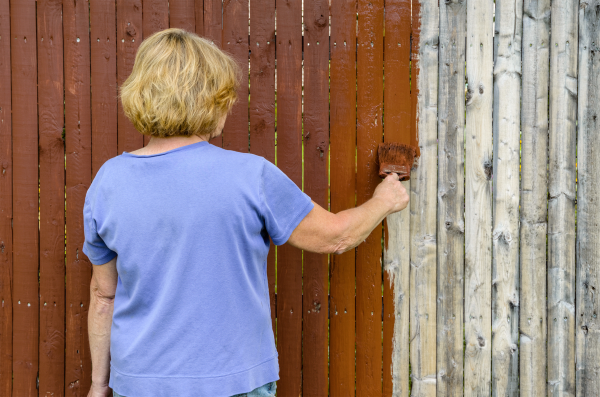Boost Your Outdoor Area with Expert Fence Staining Services!
Wiki Article
How to Choose the Right Fencing Discoloration for Your Building
When it involves boosting the appearance and resilience of your building's fencing, choosing the ideal tarnish is a crucial decision that requires mindful factor to consider. With a myriad of options readily available in the market, each dealing with different wood types, shades, and openness levels, the procedure can swiftly come to be frustrating. Nevertheless, making an enlightened choice can dramatically impact the overall appearances and longevity of your fence. Exactly how can you make certain that you select the perfect fence stain that aligns with your property's style and upkeep requirements? Let's explore some vital aspects to lead you in this decision-making procedure.Understanding Wood Types
To pick the proper fence discolor, it is vital to have an extensive understanding of the different types of timber typically utilized for fencing. The choice of wood plays an important role in establishing the long life and total appearances of the fencing. Cedar is a prominent option as a result of its natural resistance to degeneration and pests, making it a resilient choice for exterior structures. Pine is another common wood made use of in fence, recognized for its cost and convenience of discoloration. Ache is extra vulnerable to bending and deteriorating contrasted to cedar. Redwood is a high-end alternative recognized for its striking appearance and all-natural resilience, though it comes with a higher cost tag. When choosing a fencing tarnish, it is necessary to consider the type of wood being made use of to make certain compatibility and optimal defense. Comprehending the qualities of various wood types will assist you make an educated decision when it involves picking the right fencing stain for your residential property - Fence Staining Near Me.Choosing the Right Shade
Choosing an appropriate hue for your fencing discolor is a crucial choice that significantly affects the total aesthetic allure of your residential or commercial property. The shade you select should complement the style of your home, blend sympathetically with the surroundings, and mirror your personal taste. When choosing a shade, think about the existing shade scheme of your property. For an all-natural look, natural tones like browns, eco-friendlies, or grays work well. These shades can aid the fencing mix right into the landscape and produce a natural appearance. If you choose an even more modern-day or strong appearance, think about selecting darker shades like black or deep charcoal for a striking comparison. Lighter shades such as whites or light grays can make a fencing appear larger and add a touch of elegance to your residential or commercial property. Ultimately, the best color choice will improve the charm of your fence and boost the overall visual charm of your home.
Thinking About Transparency Degrees
When picking the right color for your fencing stain, an additional important aspect to consider is the level of openness that will best match your home's aesthetic and maintenance needs. Transparency degrees in fencing discolorations generally fall right into 3 classifications: clear, semi-transparent, and solid. Take into consideration the degree of exposure your fence faces, the wanted maintenance frequency, and the aesthetic you desire to attain when selecting the best transparency level for your fencing stain.Reviewing Upkeep Needs
Thinking about the long life and upkeep of your fence, evaluating the maintenance needs is crucial in establishing the most suitable fencing discolor for your home. The level of maintenance required for your fence can differ depending upon aspects such as the kind of timber, weather conditions in your area, and your individual choices.When reviewing upkeep demands, it is necessary to think about the toughness of the fencing stain. Some discolorations need more constant reapplication than others, so picking a tarnish with a longer life expectancy can assist reduce the total upkeep demands of your fencing (Fence Staining Service). Additionally, variables such as resistance to UV rays, water, and mildew can impact how frequently you need to re-stain your fencing

Examining Examples Prior To Application
Before applying any fence tarnish, it is recommended to conduct example tests to make certain compatibility with the wood and desired aesthetic outcome. Checking samples permits you to evaluate just how the stain will engage with the certain type of wood made use of in your fence, as different timbers can take in discolorations differently. To begin, select a little inconspicuous location of the fencing to apply the discolor examples.Verdict
To conclude, picking the appropriate fence tarnish for your building involves understanding the wood type, picking the appropriate color, thinking about transparency degrees, evaluating upkeep requirements, and screening examples prior to application (Fence Staining Service). By taking these elements right into consideration, you can make sure that your fence tarnish enhances your building while great post to read giving the essential security and resilience. Make an informed decision to enhance the appearance and longevity of your fencingReport this wiki page